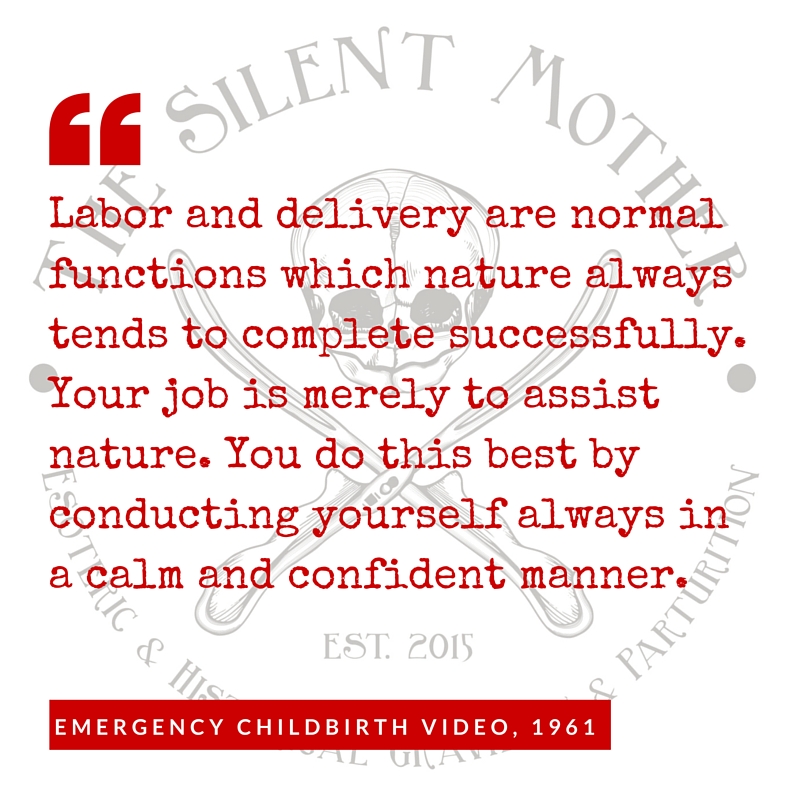I recently came across this video, Emergency Childbirth 1961 US Navy Vintage Educational Film. There are certain aspects of the film which I heartily approve and other aspects which I am less fond.
 The good:
The good:
Delayed cord clamping – The narrator advises the birth attendant not to clamp or tie the cord prior to the cord ceasing to pulse. This is a critical component, as it allows baby to get all of his blood and can reduce the need for resuscitation.
Support the mother’s perineum – To reduce the risk of tearing, the birth attendant uses his hand to support the tissues just below her vulva.
Attention to sterility – The use of gloves is noted and good hand washing. There were still births done in this era without gloves, especially at home.
Scope of practice – The narrator is explains when to transfer to hospital and what can be handled at home.
Breastfeeding – Breastfeeding is not only encouraged, but demonstrated. The benefits of breastfeeding for expelling the placenta and controlling postpartum bleeding are also covered.
Placenta – Allowing the placenta to be born of it’s own accord, without any pulling or tugging on the cord.
Patience – It is emphasized a number of times that the birth attendant be patient with both the baby and the placenta.
The bad:
Mom gives birth flat on her back – This is the least effective pushing position and not recommended. My opinion is that laboring mothers should be giving birth in the position they find best and the birth attended should make accommodations for that position.
Shaved pubic hair – It was common practice up through the 1980’s to shave a woman’s pubic hair before birth. This was purported to be hygienic. However, we have since learned that shaving for birth increases risk of infection.
Camera angle – I think this one bothers me the most. The camera is pointed directly at the mother’s vulva so we can see the baby being born. However, it is a very dehumanizing angle. We see nothing of her face or the rest of her body to see how she is feeling or how well she is pushing. This angle is typical of birth depictions from obstetrical textbooks from the 1700’s onward. The disembodied woman’s parts were, in theory, to preserve her decency. However, it takes away her humanity.
No sound – The only sound we hear is that of the narrator. To provide a full and true perspective on birth, we must be able to hear the noises the laboring mother makes and the words her partner and her birth attendant says. This is a key missing piece.
I do think this video is worth your time. It does provide some insight into how birth was viewed in the early 1960’s and how far we still have to go. Fair warning, the video is very graphic, given the camera angle and the amount of blood shown. If you are squeamish, you may choose to skip watching it.
Please support The Silent Mother by becoming a patron through Patreon.
Your generous donation allows me to keep writing.
